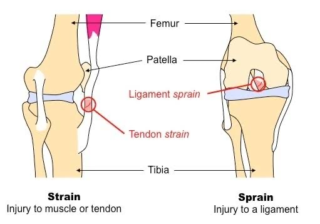CONDITIONS
Medical Conditions we treat:
HEAD
NECK
SHOULDER
WRIST
HIP
KNEE
ANKLE
BACK
ELBOW

Medical Conditions we treat:
- Musculoskeletal Conditions
Joints & Bones
Frozen Shoulder (Adhesive Capsulitis)
Bursitis
Dislocated Shoulder
Post Surgical Rehabilitation
Knee Pain
Osteoarthritis
Condramalacia Patella
Joint Stiffness
Neck & Spine
Neck Pain & Stiffness
Spondylitis
Low Back Pain
Sciatica
Degenerative Disc Disease(DDD)
Herniated Discs(Bulging Discs)/Slipped Disc
Spondylosis
Scoliosis
Piriformis Syndrome
Posture problems
Muscles
Spasm
Fibromyalgia
Rotator Cuff Injuries
De Quervain’s tenosynovitis
Trigger Finger
- Neurological conditions
- Sports injury conditions
Sprains and strains
Sprains and strains both refer to damage to the soft tissues in the body, including ligaments, tendons, and muscles. They are common injuries that share some symptoms but affect different body parts. People can often treat sprains and strains at home.
A sprain is an overstretched, torn, or twisted ligament. A ligament is a tough band of fibrous tissue that connects bones to other bones or cartilage. Ligaments are usually located around joints. Commonly sprained areas include the wrists, ankles, thumbs, and knees.
A strain is an overstretched, torn, or twisted tendon or muscle. A tendon is a tough cord of fibrous tissue that connects muscles to bones. Commonly strained areas include the legs, knees, feet, and back.
- A sprain is an injury to a ligament.
- A strain is an injury to muscle or tendon tissue.

Causes of sprains
The most common causes of sprains are falling, twisting, or experiencing trauma to the joint. These types of injuries may cause the joint to move out of its normal range of movement, tearing or stretching the ligament as this happens.
Situations that may result in a sprain include:
- walking or running on an uneven surface
- twisting or pivoting suddenly
- falling and landing on the wrist or hand
- playing racquet sports
- injuries from contact sports
Causes of strains
Strains may occur suddenly (acute) or develop slowly over time (chronic).
Causes of acute strains include:
- lifting a heavy object
- running, jumping, or throwing
- slipping or falling
Causes of chronic strains include playing sports and activities that involve repetitive movements, such as rowing, tennis or running. Sitting or standing in an awkward position for prolonged periods can also cause chronic strains.
Symptoms
A sprain usually happens suddenly around a joint. Symptoms may be mild or severe, according to how many tissue fibers are affected. Symptoms include:
- pain
- swelling
- bruising
- limited movement around the joint
- inability to put weight on the joint or use it normally
- a “popping” sensation at the time of the injury
A strain can also occur suddenly, but it may develop over time. Symptoms include:
- pain or tenderness
- swelling
- bruising
- muscle spasms or cramping
- muscle weakness
- limited movement in the area
Prevention
People can help to prevent sprains and strains by:
- Strengthening muscles around joints: Regular conditioning and stability exercises can build a strong skeletal framework and help prevent injuries.
- Warm up properly before exercise: Warming up the muscles increases their range of movement and helps to avoid trauma and tears to connective tissue.
- Wear appropriate footwear: Shoes with proper support can help to protect the ankle and knee joints.
- Be aware of your environment: Watching out for slippery or uneven surfaces, or obstacles that may cause an accident, can help prevent injuries.
- Take breaks: Sitting or standing in one position for too long or performing repetitive actions can put undue strain on the muscles. People can take regular breaks and stretch to release the muscles.
Not all sprains or strains are preventable, but with proper aftercare, people can ensure they do not cause any permanent damage or complications.

